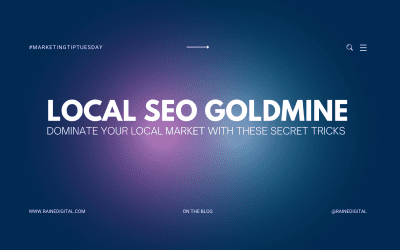“Price is what you pay, value is what you get,” Warren Buffet, business magnate, famously said. His point being while the two are related, they are not the same.
Price is the money your business asks your customers to spend on your product or service. Value is the benefits that your product or service offers your customer according to your customer. In other words, even though you set your own price point, the value of your product is determined by your customer. And the value assigned by one customer will not necessarily be the same as another, which is why you must focus on offering personalized value to everyone you meet rather than a one size fits all solution for the masses. Here’s how:
Value is Emotional
No, I don’t mean that your customers are going to cry every time they use your product (although they might if it is really good). Instead, I mean that value is not logical. Value is determined by the emotional response that your product evokes. Regardless of how many benefits you believe your product has, if your customer doesn’t experience them and feel that they positively impacted their life, then it’s not valuable.
When your customer hovers over your “buy now button,” they are questioning whether the product is worth more to them than the cost. If the customer doesn’t see how your product will relieve enough pain-points to offset how much they spent on it, they will go somewhere else.
For example, a cup of coffee at a nationally recognized American coffeehouse costs $3.25 on average. Whereas, one pound of non-grounded coffee beans cost $13 on average when bought from the same nationally recognized American coffeehouses and produces 48 six-ounce cups of coffee. When calculated out, a cup of coffee brewed at home costs on average 27 cents. Still, over 7 million Americans opt to buy their coffee out, rather than brewing it for themselves at home. Why? Because despite the habit being less cost-effective, the experience of going to Starbucks is more valuable to them than saving nearly $21 a week.
Campaign For Your Product
Every company is capable of clearly articulating the value they believe that they offer their customers. But it is ultimately the customers whose votes count, and they cast their ballot with their wallets.
Consider selling your product like you are running for President. You can’t build a successful campaign by telling people, “vote for me, I have great ideas.” Most voters wouldn’t respond well to this. Instead, voters, like your customers, want you to understand with their everyday problems and to offer them workable solutions to these problems.
Candidates win when voters understand how their lives will improve by voting them into office, just like your product sells when customers see the value your product will bring them. Only once potential customers understand that your product will bring more value than the cost being asked will they hit that “buy now” button.
The 5 Types Of Value Your Customers Want
Not all types of value your product gives your customers are equal. Continuing with our running for president example, you don’t hear most candidates talking about improving the color of deli cheese throughout their campaign because although they might accomplish this during their presidency, it doesn’t resonate with the voters. Instead, candidates discuss topics like social issues and protecting the environment because these are the subjects that secure votes.
Similarly, focusing on certain benefits in your marketing campaign will increase the value your product offers your customers and noticeably improve your sales. As outlined in Consumption Values and Market Choices, here are five types of value that customers are most responsive to:
Functional
Functional value refers to your product’s ability to serve a practical purpose. Products with functional value provide satisfaction by helping users accomplish the job better. The more effectively, efficiently, or reliably your product can do this job, the more functional value it offers.
Are you more likely to buy a car that runs for two-hundred-thousand miles on regular maintenance alone, or one you need to bring into the shop once a month? The first option because it provides greater functional value!
Products with functional value establish customer loyalty and encourage referrals. By defining how your specific brand provides greater functional value over your competitor, customers are more likely to repurchase your product, even if it is not the lowest cost version. For example, Amy Taylor, blogger behind Brains on Fire, explains that many Americans will purchase Dawn dish detergent even when it is not on sale. Why? Because Dawn’s campaign highlights that their soap is so good at its job that scientists use it to help save animals from oil spills.
Social
Social value is established when people feel they are contributing to something bigger, building their self-worth. Whether it is logging into an online gamine discourse or attending cooking classes at your local store, customers want to share what they are passionate about with others. When your products provide this space, your customers want to buy your products so they can continue to feel connected.
As a company, it is your responsibility to cultivate this connection between your customers. The stronger the community that you create, the more your customers will feel like they belong, and the more they will spend to stay connected to the community. There are two main ways to do this. One is by hosting meetups, experience, or online forums curated specifically for your customers. The other, often more sustainable method, is to nurture the conversation that organically arises around your company, especially on social media.
Take Apple, for example. Although Apple offers competitive products, the company’s success relies on its ability to foster a community of evangelists. In demographics like students, artists, and entrepreneurs, Apple empowers its customers to “think differently,” better even, creating belonging by simply using these products. Sure, individuals within these demographics could purchase similar products from other, more affordable brands. However, Apple offers more than just competitive products to their customers, they offer a ticket into a community.
Emotional
Emotional value reflects how your product makes your customers feel. Brand relationships expert Jeremiah Gardner identifies the three levels of emotional value: affinity (knowing about your product), validation (feeling satisfaction from using your product), and identity (personally recognizing with your product).
Customers buy experiences. The experience you offer determines whether your customers feel happy, satisfied, or frustrated with their purchased product. But the feeling has nothing to do with the purchase, it’s about the emotional value associated with making the purchase.
Why do you shop at your favorite stores? Is it for the products? If so, could you buy these same products elsewhere? Or, is it for the experience?
As experiences evolve alongside technology, many companies provide multiple shopping experiences, including online, in-person, and pop-up shops. By providing multiple means to buy for your product, you offer customers more control over their experience and empower them to shop more freely. Allowing, for example, a customer to shop online for a sweater, but in-person for larger investments, such as an engagement ring.
How then, do you know which experience you should offer your customers? According to Ahmed Galal Ismail, CEO of Majid Al-Futtaim Ventures, your company’s success relates to your ability to understand and respond to your customer’s needs. “The secret is to keep striving to truly understand what your customers want, constantly seek new ways to enhance your experiences and deliver more value for your company by creating more emotional value to your customers.”
Epistemic
Founded in the desire to learn, epistemic value relates to products that help you to pursue your curiosity. For example, epistemic value manifests in the excitement associated with reading a new book, taking a class, or watching a how-to on YouTube. However, this value goes deeper than learning for the sake of knowledge. Often, it is a point of pride that confirms your customer’s beliefs and validates the ideas they already hold true.
Generally desired by innovators and early adopters, epistemic value satisfies the craving to the first to know, have, or utilize a technological breakthrough. Think about what motivated the first customers to buy an electric car from Tesla. Early Tesla owners found pride in being ahead of the luxury, environmentally conscious car trend. Intrigued by the newness, these customers invested in the innovation, discovered how the innovation could be leveraged and felt a sense of exclusivity in owning the product.
Conditional
Conditional value is based on the specific context encompassing the purchase and is the most unreliable value your product can provide. Conditional value explains why most consumers don’t shop for new skis in July because they would gather dust for three months. Compared to the other types of value, conditional value derives from necessity, rather than desire. Such that, if you are hungry on a road trip, the fast-food restaurant you try and avoid suddenly provides exceptional value.
But be warned: if you rely solely on conditional value to sell your product, your customers will often feel dissatisfied with the purchase due to the circumstances. For example, if a customer’s basement floods, then they must invest in sandbags to save their property from further damage. However, your customers likely won’t want to invest in your product, and likely will not seek out reinvesting in your product despite the relief it offers.
Similarly, when Hurricane Florence hit the coast of North Carolina in 2018, many gas companies raised their prices significantly because scarcity allowed it. And because there was a state of emergency, customers still need to purchase the product, even if they could not afford it. In a matter of days, the North Carolina Attorney General’s Office received nearly 500 allegations against businesses breaking the state’s price-gouging law. Sure, the conditional value of these circumstances were highly profitable for a moment, but at what cost?
Especially during disasters and times of scarcity, leveraging your product’s conditional value demands caution. If mistreated, your company can ruin its reputation, undermine the other value your product brings in everyday circumstances, and ruin your customer relationships.
Whenever your customer makes a purchase, they are looking for value that is in their best interest. This value is the feeling which results from the transaction and is part of the experience. Before creating your next marketing strategy, consider: What value are you trying to create for your customers? How are you doing it? Is it working?



0 Comments